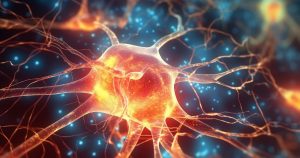November 8, 2024 from Scientific American

Could Consciousness Reside in the Brain’s Electric Fields?
Consciousness remains one of the most enigmatic aspects of human experience. While traditional neuroscience attributes consciousness to neural firing—the tiny voltage spikes in the brain—a growing body of research suggests that electromagnetic (EM) field effects, specifically ephaptic coupling, may play a more significant role in awareness and cognition.
From Neural Firing to Ephaptic Fields
Since the 1940s, scientists have sought to decode the “neural code”—the mechanism by which neurons communicate to produce thoughts, perception, and consciousness. Despite decades of study, the specifics remain elusive. Neuroscientist Mark Humphries admitted in The Spike (2020) that much about how neural spikes contribute to the mind’s workings is still unknown.
Emerging research points to ephaptic coupling, where neurons interact through electric fields rather than synaptic connections, as a potential explanation. This mechanism operates alongside synaptic spikes and involves EM fields at various scales, from nanometers to entire brain regions.
Compelling Experimental Evidence
In 2019, a groundbreaking study by Dominique Durand’s lab at Case Western Reserve University demonstrated that mouse brain tissue could communicate via ephaptic fields even when physically severed. Although the effect dissipated beyond 400 microns, the findings were robust enough to require multiple replications before publication.
Further studies highlight the remarkable speed of ephaptic effects, which propagate up to 5,000 times faster than neural firing. This translates to a potential information density 125 billion times greater than that of traditional synaptic activity, though more research is needed to determine how much of this potential is realized in the brain.
Implications for Consciousness
Pioneering neuroscientists, including Walter Freeman and Christof Koch, have long suspected that traditional neural firing speeds cannot fully account for the rapid cognitive processes observed in animals and humans. Recent studies, such as those by UCLA’s Costas Anastassiou, provide compelling evidence that ephaptic coupling enables the fast coordination necessary for consciousness, even in the absence of rapid synaptic activity.
A Paradigm Shift in Neuroscience?
These findings suggest a reevaluation of how we understand cognition and consciousness. While synaptic firing remains essential for sensory and motor functions, the pervasive and fast-acting nature of ephaptic fields points to their potential as a primary mechanism for awareness. As one scholar remarked, these discoveries could “electrify the field” of neuroscience, shifting the focus from neural spikes to the brain’s electromagnetic dynamics.
=================================================================
Considering an IME or document review to resolve an insurance claim, legal file, or workplace health and safety issue?
Our specialists provide evidence-based opinions, so get in touch with Western Medical today to learn more about our services.

